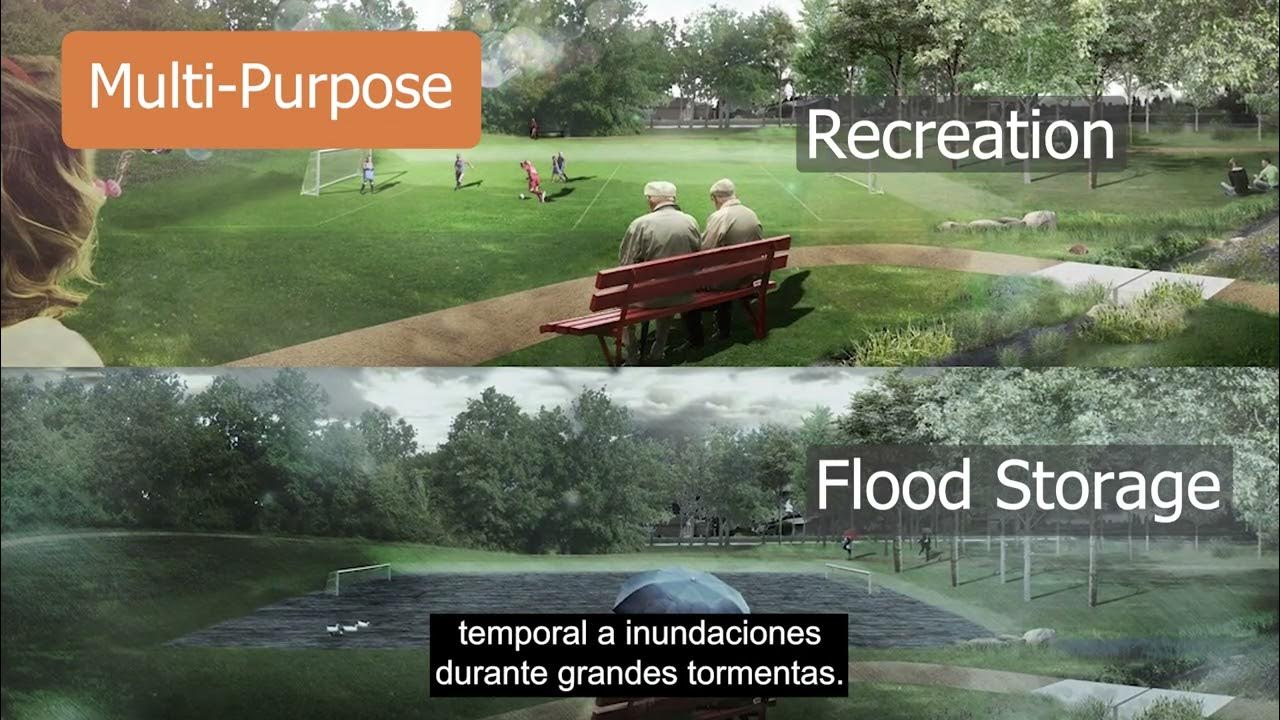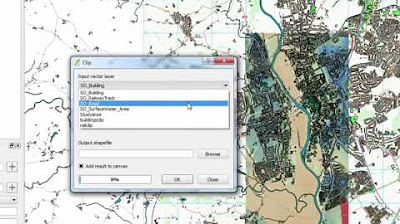Flooding: Why it happens and how we can help
Summary
TLDRScotland is adopting a coordinated approach to flood risk management, supported by the 2009 Flood Risk Management Act. By using both traditional and sustainable methods, such as flood walls, wetlands, and woodlands, the country is working to reduce flood risks. CEPA plays a key role in flood warnings and coordinating efforts with Scottish Water and local authorities. With strategies set for 2015 and local plans for 2016, the focus is on long-term, effective risk reduction, protecting homes and communities across Scotland from the growing impact of flooding.
Takeaways
- 😀 Scotland's flood risk management approach is evolving, with an emphasis on partnership working and a more planned response to flooding.
- 😀 The Flood Risk Management (Scotland) Act of 2009 encourages collaboration among public bodies to address flooding more effectively.
- 😀 Scotland's first national flood risk assessment was published by CEPA in 2011, providing a clearer understanding of flooding sources and impacts.
- 😀 Flooding can occur from various sources, including river catchments, surface water, and coastal storms, with climate change expected to increase flood risk.
- 😀 In urban areas, surface water flooding occurs when drainage systems are overwhelmed by rainfall, leading to flooding that doesn't enter water courses.
- 😀 Coastal flooding can happen during storms and high tides, putting properties at risk along the coastline.
- 😀 Around 125,000 properties in Scotland are at risk of flooding, which is approximately 1 in 22 homes.
- 😀 CEPA plays a strategic role in managing flood risk and works closely with Scottish Water, local authorities, and emergency services.
- 😀 Floodline is a 24/7 flood warning service that provides free alerts to residents, helping them protect their property and safety.
- 😀 While flooding cannot be entirely prevented, sustainable management approaches like planting woodlands and restoring flood plains can reduce the impact of flooding.
- 😀 Scotland's flood risk management strategies and local flood risk management plans are set to be published in 2015 and 2016, respectively, guiding future investment in flood protection measures.
Q & A
What is the primary objective of the Flood Risk Management (Scotland) Act, 2009?
-The primary objective of the Flood Risk Management (Scotland) Act, 2009 is to encourage partnership working among public bodies, helping to coordinate actions and take a more planned approach to managing flood risk in Scotland.
What significant step did CEPA take in 2011 regarding flood risk management?
-In 2011, CEPA published Scotland's first National Flood Risk Assessment, which was a major step in understanding the sources and impacts of flooding in Scotland.
What are the main sources of flooding in Scotland?
-The main sources of flooding in Scotland include river catchments, surface water flooding in urban areas, and coastal flooding due to storms and high tides.
How does climate change affect flood risk in Scotland?
-Climate change is predicted to increase flood risk in Scotland by affecting the sources of flooding, such as river catchments and coastal areas, leading to more frequent or severe flooding events.
What happens when rivers can't cope with excessive water?
-When rivers can't cope with excessive water, flooding occurs as the water overflows the riverbanks.
What is surface water flooding, and why does it happen?
-Surface water flooding occurs in urban areas when drainage systems are overwhelmed by the volume of water that doesn't enter water courses, leading to excess water on the land.
How does CEPA support flood management in Scotland?
-CEPA supports flood management by serving as the flood warning authority, working closely with Scottish Water, local authorities, and emergency services to coordinate flood risk management efforts.
What is the Floodline service, and how does it help residents?
-Floodline is a 24/7 flood warning service that sends free alerts directly to residents' phones, giving them time to take protective measures against flooding.
What is the approach to managing flood risk in Scotland?
-Scotland's approach to managing flood risk is more sustainable, focusing on whole river catchments and using natural techniques such as planting woodlands and restoring wetlands, alongside traditional engineered solutions like flood walls and embankments.
What are some examples of flood protection methods for homeowners?
-Homeowners can use flood protection products such as flood guards and air brick covers to protect their homes from flooding.
When will Scotland's first flood risk management strategies and local plans be published?
-Scotland's first flood risk management strategies will be published in 2015, with local flood risk management plans to be published by local authorities in 2016.
Outlines

This section is available to paid users only. Please upgrade to access this part.
Upgrade NowMindmap

This section is available to paid users only. Please upgrade to access this part.
Upgrade NowKeywords

This section is available to paid users only. Please upgrade to access this part.
Upgrade NowHighlights

This section is available to paid users only. Please upgrade to access this part.
Upgrade NowTranscripts

This section is available to paid users only. Please upgrade to access this part.
Upgrade NowBrowse More Related Video

Flood control expert Dr. Guillermo Tabios III on Typhoon Carina | The Howie Severino Podcast

Flood Risk Assessment: Basics

Flooding in the District: Ep. 3 – Blue-Green Infrastructure

QGIS Flood Risk Mapping Walkthrough

Manajemen Risiko Berdasarkan SNI ISO 31000:2018

[NewsLife] Palace: Gov't on heightened alert for Yolanda || November 6, 2013
5.0 / 5 (0 votes)